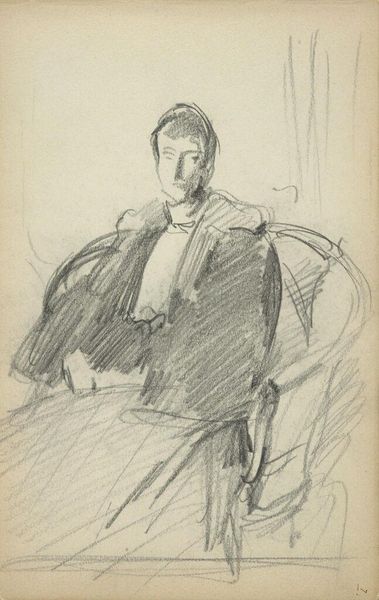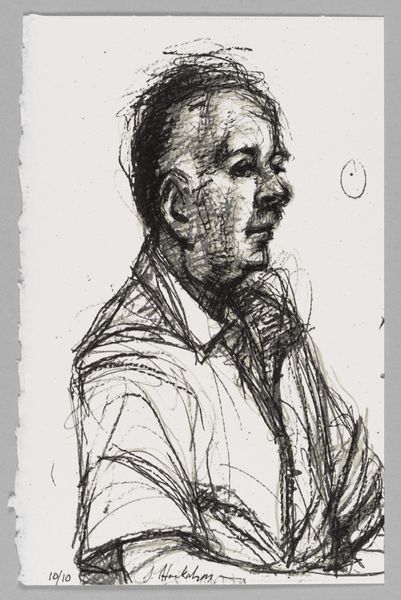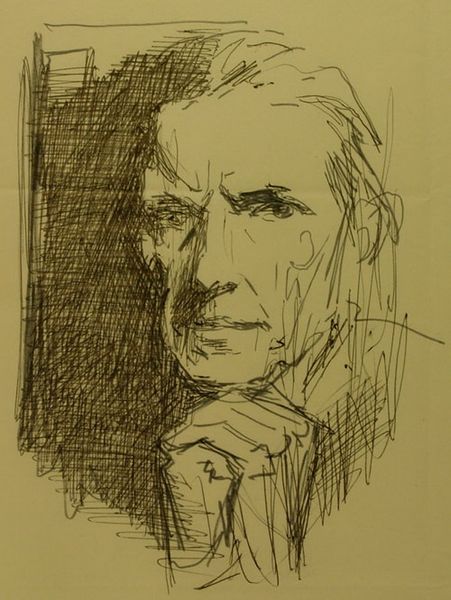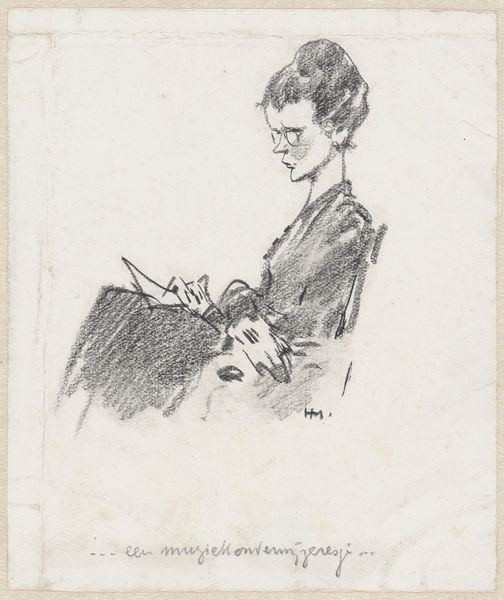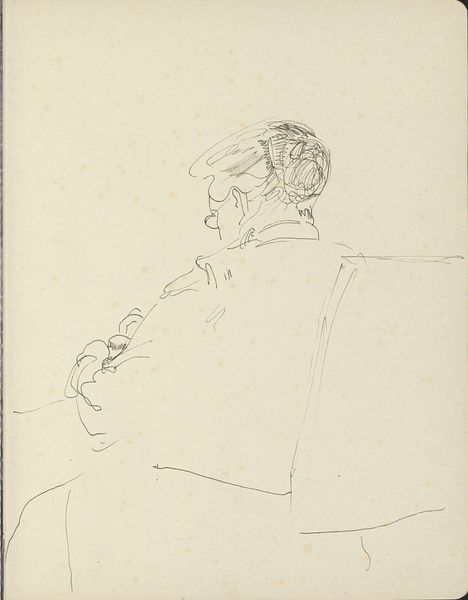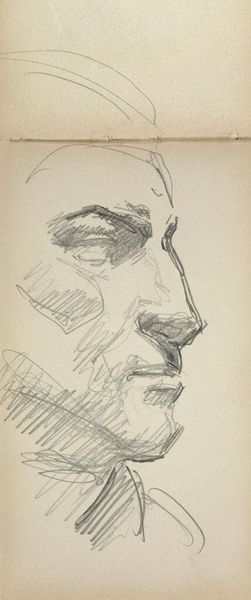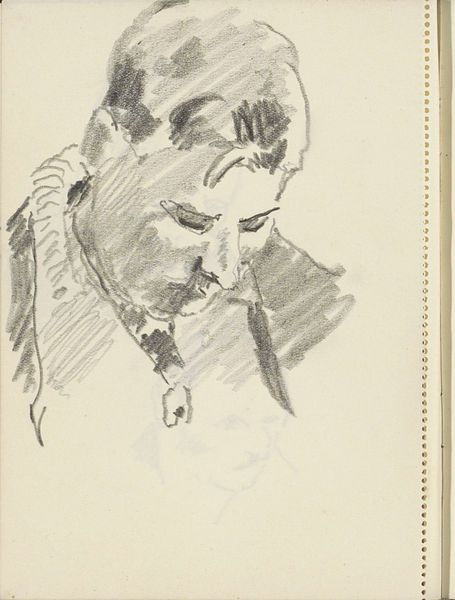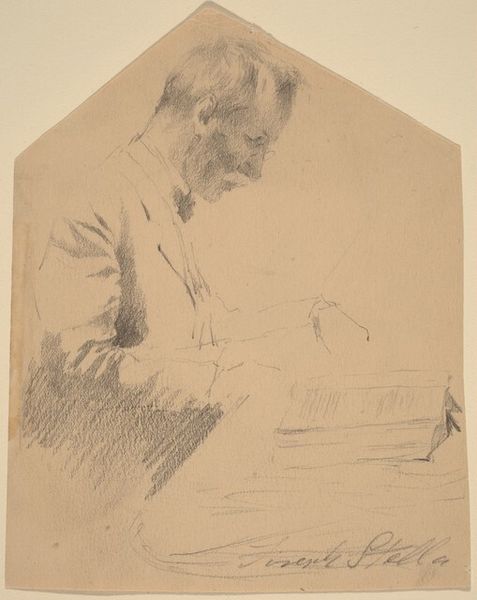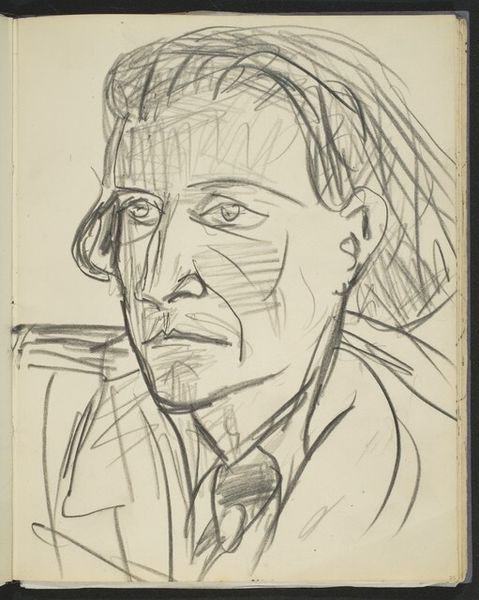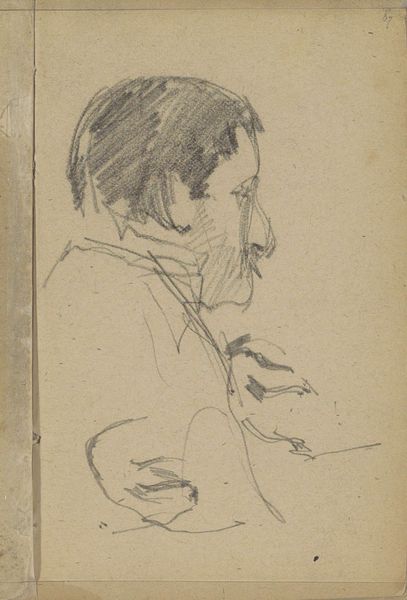
Henry Tonks 1918
0:00
0:00
johnsingersargent
Fitzwilliam Museum (University of Cambridge), Cambridge, UK
drawing, pencil, charcoal
#
portrait
#
drawing
#
pencil sketch
#
landscape
#
charcoal drawing
#
figuration
#
sketch
#
pencil
#
expressionism
#
portrait drawing
#
charcoal
#
modernism
Dimensions: 24.8 x 37.1 cm
Copyright: Public domain
Editor: This drawing is "Henry Tonks," rendered in pencil and charcoal by John Singer Sargent in 1918. It's at the Fitzwilliam Museum in Cambridge. The subject has such a piercing gaze, and the stark lines create a mood of intense focus, or perhaps even anxiety. How do you interpret this work? Curator: Notice how the rigid, almost cage-like lines behind Tonks contrast with the softer modeling of his face and hands. These sharp lines could represent confinement, the psychological pressures of wartime, a feeling Sargent might have shared and wanted to project onto Tonks. Editor: So, you’re suggesting the environment depicted mirrors the subject's internal state? Curator: Exactly! The pencil and charcoal, with their inherent capacity for stark contrast, enhance this. And consider Sargent choosing Tonks, who served as a medical artist during WWI. Do you see a resonance with other symbolic depictions of the war at that time? Editor: Yes, it reminds me of some of the stark depictions of the trenches - like Paul Nash's paintings. It connects on an emotional level, that quiet intensity is similar. I guess I hadn’t thought of the visual vocabulary of war before. Curator: And there is a shared visual language which unites cultural memory around conflict; did your reading mention the psychological impact this can have? Perhaps Sargent intuited this even before formal studies fully explored the concept of PTSD. He was a perceptive portraitist, known for capturing inner states, after all. Editor: I’m struck by how much emotion Sargent conveys with such simple means. Thank you. Curator: And I appreciate your connecting the piece to wider artistic and psychological themes!
Comments
No comments
Be the first to comment and join the conversation on the ultimate creative platform.
